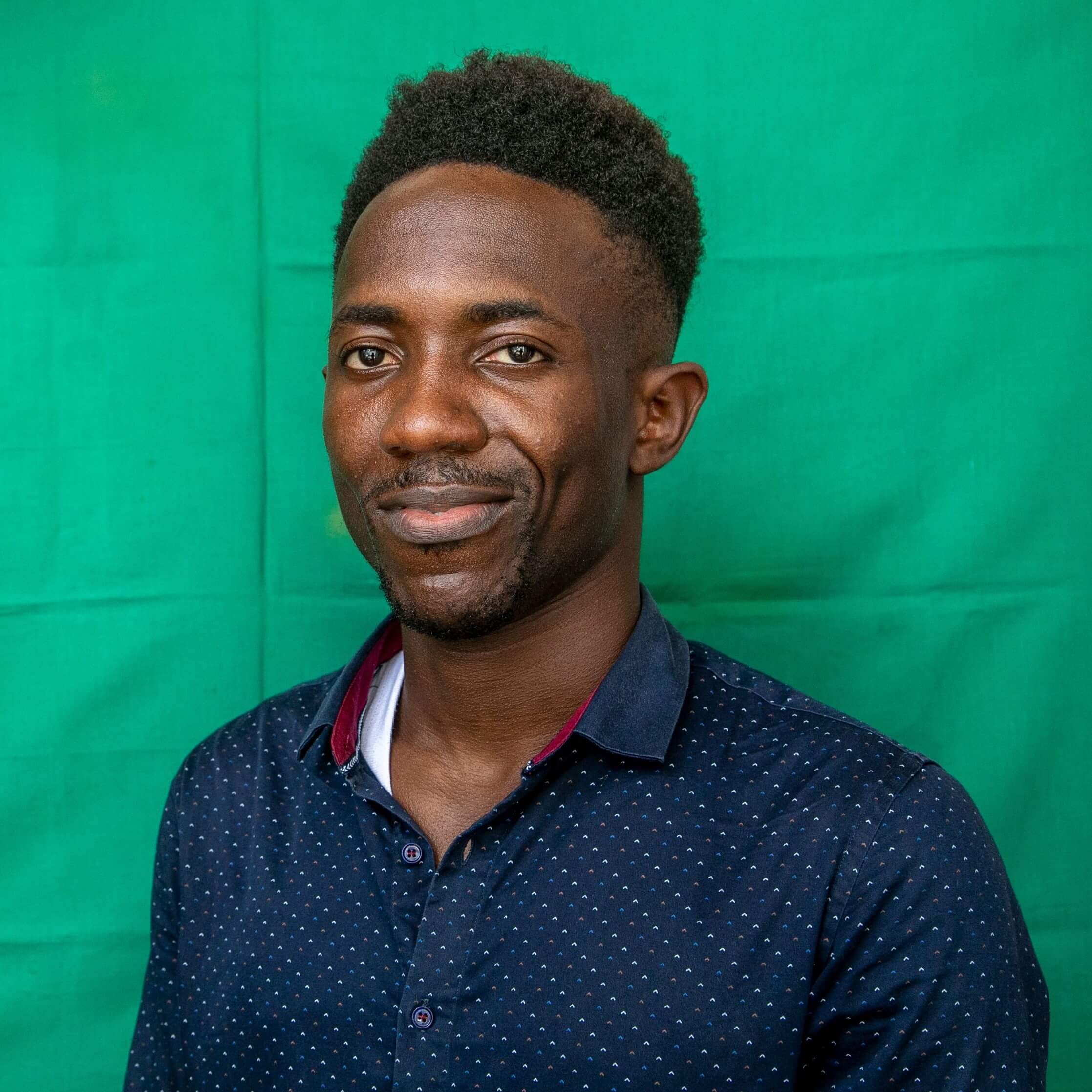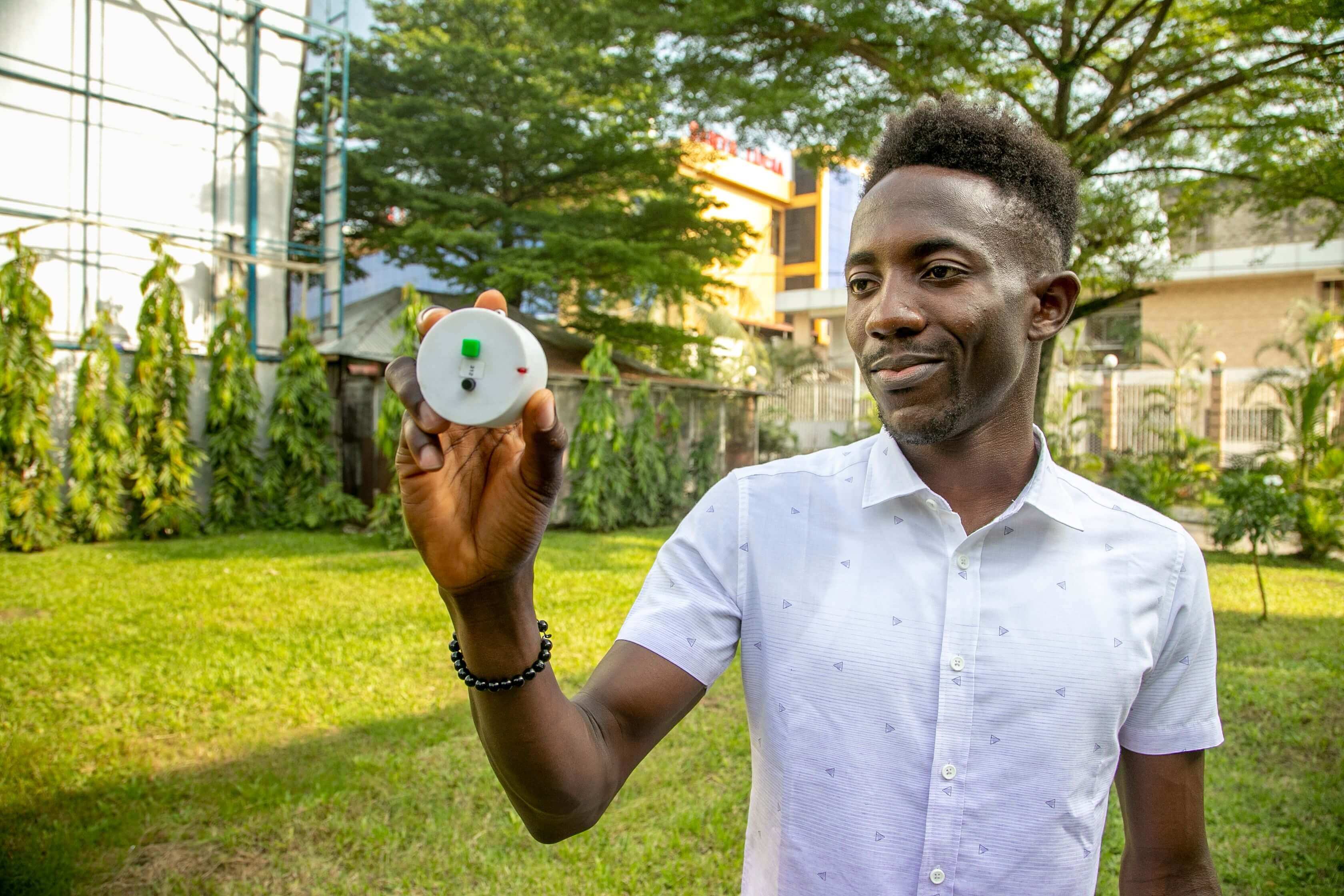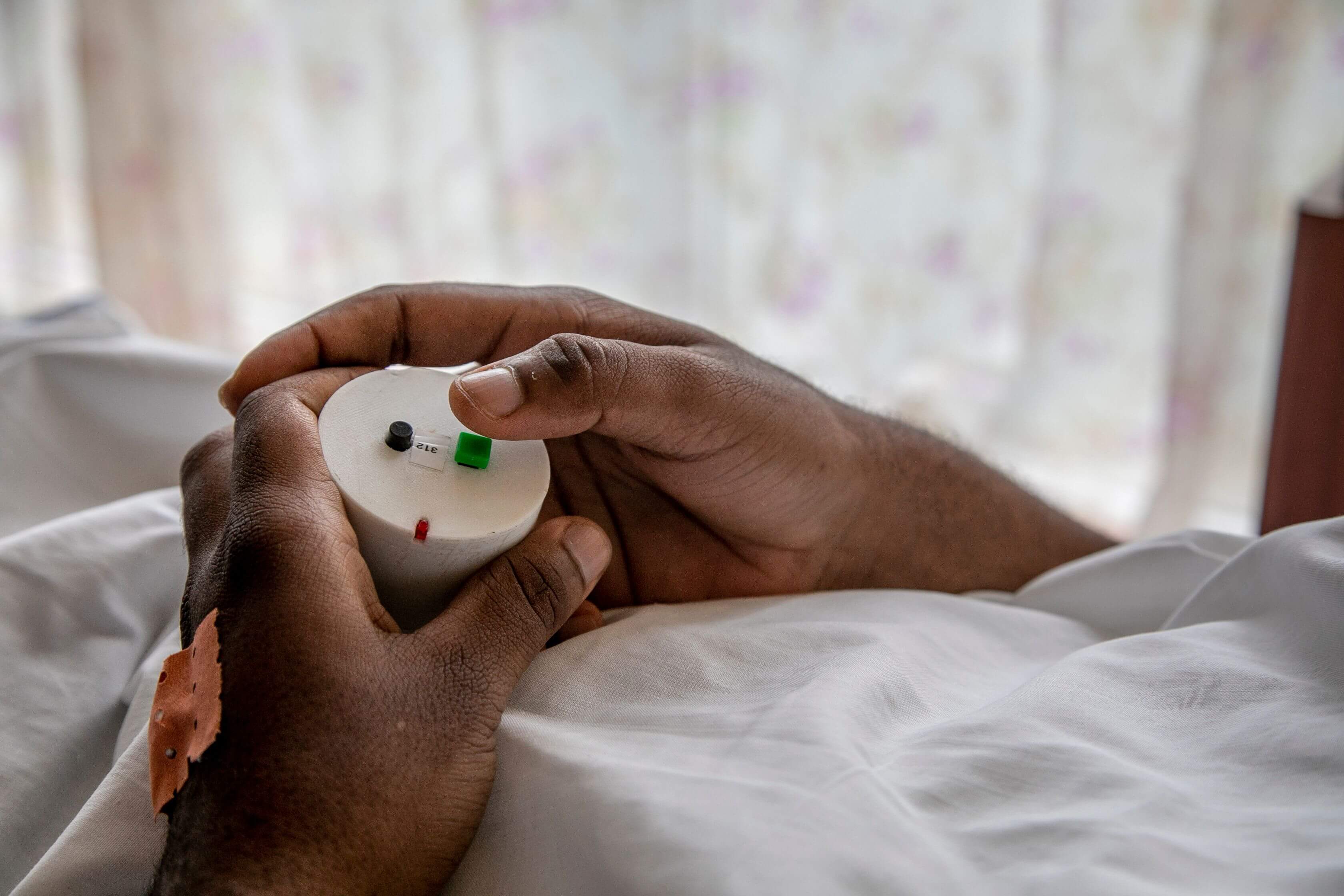Developed by biomedical engineer Fabrice Tueche, TelMi consists of two devices - one used by patients, and one by nurses. The patient’s device lets them alert medical staff of any problems with the push of a button, while also monitoring the patient’s condition proactively. When there’s an emergency, the nurse’s corresponding device emits visual, vibration or audible alarms.
With the instability of electric supply in many hospitals and clinics in mind, TelMi is designed to run on rechargeable batteries that can last more than a month. While the patient device only transmits for a few metres, repeater nodes extend this up to hundreds more, making it possible to reach their nurse practitioner anywhere in the facility. Tueche has also designed both a Wifi and a low-frequency radio version, ensuring medical facilities with less connectivity are still able to use it.
The Wifi-enable version collects data about alarm response time and frequency, which a cloud-based artificial intelligence system analyses in order to improve efficiency and predict patterns. Patient and nurse devices can transmit and receive to and from an unlimited number of devices, which helps maximise limited human resources in under-resourced facilities.
The Cameroonian healthcare system is ranked in the bottom 10 countries globally, with patient satisfaction a key factor in the ranking. Cameroon’s nurse to patient ratio is estimated to be as low as 7.9 to 10,000, with the doctor to patient ratio even lower at 1.1 to 10,000. The goal of the TelMi device is to help nurses monitor more patients with less effort, giving patients a better response time in emergency situations.
TelMi is currently being trialled by two healthcare facilities in Cameroon. Tueche and his team aim to make future versions shock- and waterproof, and improve data analytics.

“Our mission is to improve the efficiency of medical staff so that better care can be provided with the limited resources that many of our medical facilities have. We hope in this way to impact many people from behind the scenes, ensuring they get the best possible care.”
Fabrice Tueche


